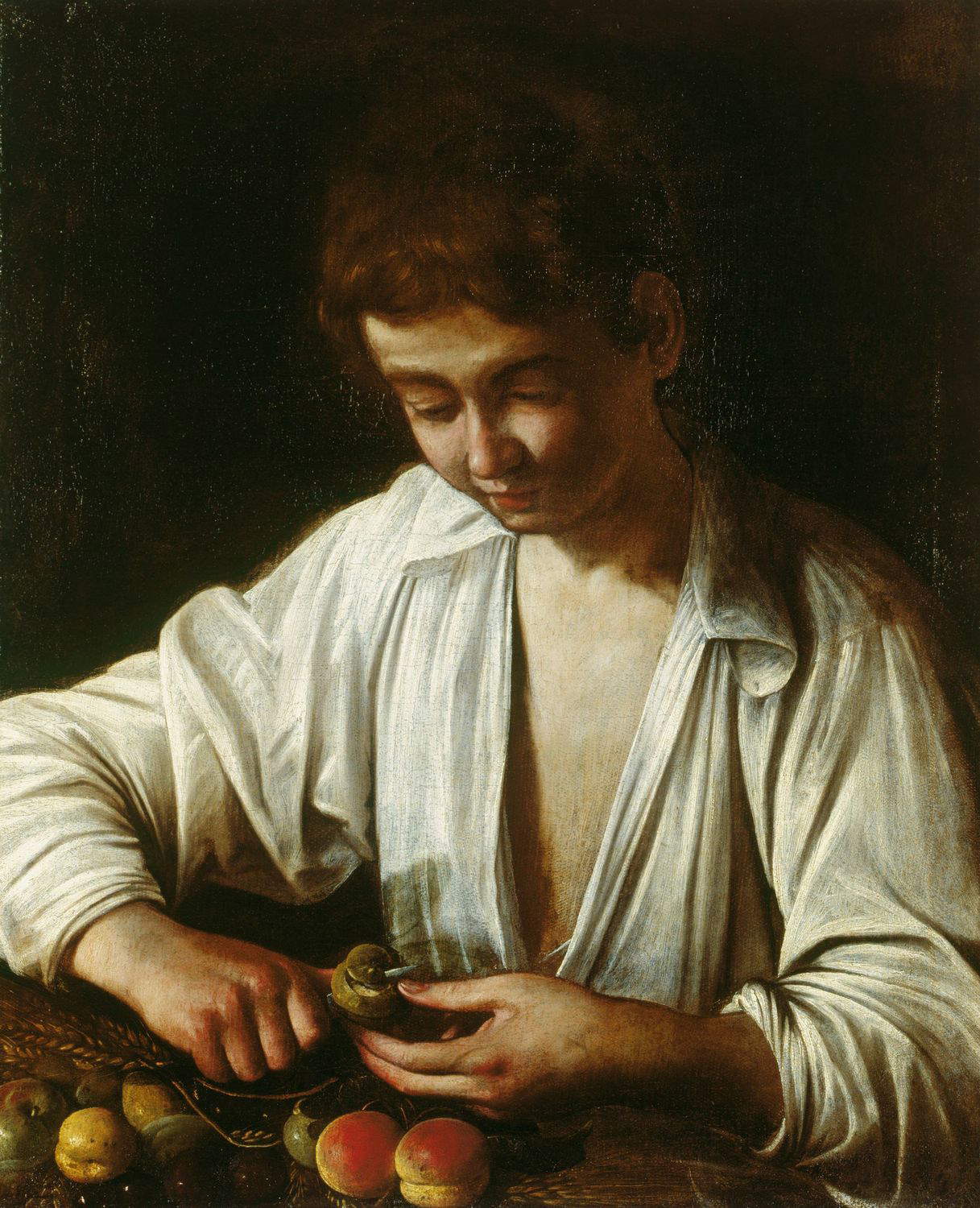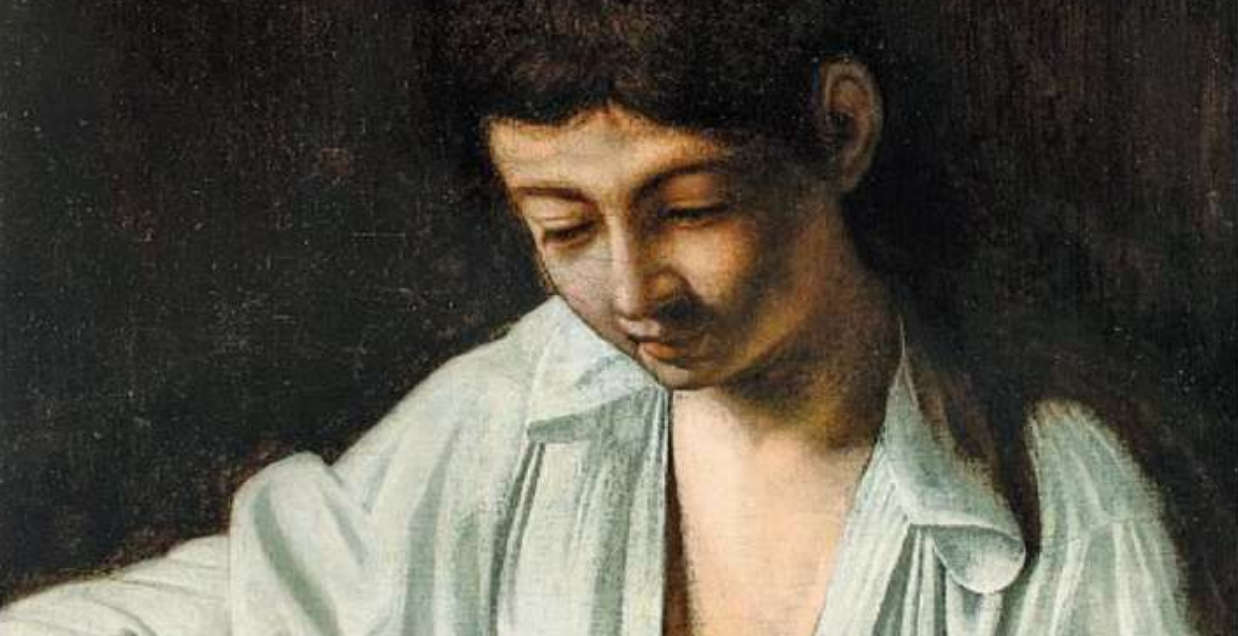Has a new Caravaggio been discovered? This is the question one asks after reading the words of Gianni Papi, one of the best-known experts on the great Lombard artist, interviewed for Corriere della Sera by Edoardo Sassi. The newspaper first gives an account of the discovery of a painting, the Ragazzo che monda un frutto, which repeats a well-known subject of Caravaggio’s production: one of several versions, which belongs to the British royal family, is in Rome, on display at the Caravaggio exhibition at Palazzo Barberini. Papi is convinced, however, that he has found the original.
The Mondafrutto, as this subject is also known, is considered the earliest known subject of Caravaggio’s work (biographer Giulio Mancini first mentioned it around 1618-1619). Papi claims to have been contacted by the owner of what he believes to be the original to have him precisely study the canvas. The work had gone to auction last year, and was considered a “copy from Caravaggio”: the owner bought it on that very occasion. However, the ancient provenance is unknown. Papi says he was puzzled when he was called to examine the work: he believed it was in fact one of many versions of the Mondafrutto. However, he also says that his misgivings dissolved after the live viewing: the work was in fact restored and subjected to technical analysis (radiography, reflectography). “Contrary to my initial hesitations, deepening my analysis,” he said, “I am now of the opinion that the one that has just re-emerged is an autograph work by Merisi and in it must be recognized as the first version to which the other notes conform.” Among these, according to Papi, at least one other autograph can be counted: “I believe that at such a complicated time in his life - the early Roman times, about 1596, in which Caravaggio had extreme difficulties, even alimentary ones - he may have repeated, upon request, or to sell, one of his earlier compositions. This is the case, I believe, with the Hampton Court redaction, which I proposed back in 2009 to be an autograph version, precisely the one that can now be seen at the Caravaggio exhibition still underway in Rome.”

In favor of the autography of the newly discovered painting plays, according to Papi, the quality of the best-preserved parts, in particular the shirt, the fruit still life (“in which I think a matrix of Lombard origin is perceptible,” says the scholar, “more accentuated than, for example, the same piece in the Hampton Court painting, which has an aspect close to the type of fruit elaborated in the environment of Cavalier d’Arpino.” It is therefore possible, according to the art historian, “that the new canvas was made before Merisi’s arrival in Rome and that he took it with him, perhaps it was not even the only one, as a calling card. Even before, in short, the one that biographer Giulio Mancini says was executed in Pandolfo Pucci’s house.”
The decisive element, however, would be above all one, which Papi noted from the X-ray of the work: “a dark insert at the bottom in the area that creeps between the boy’s hands, the fruit, and reaches up to the shirt. In this dark shape one can recognize an animal, almost certainly a small dog with its snout turned upward, toward the boy’s face, with its mouth half-open. The canvas used for painting is definitely a recycled canvas, a fact that could be a confirmation of Caravaggio’s economic precariousness at the time he made the painting. From the X-ray we can see in several parts pieces that look like those of an underlying landscape, and it is clear how the support was extensively cut on at least three sides to adapt it to the use the painter wanted to make of it according to the new image. It is not certain that the dog was part of the earlier composition; likewise it could be the result of an early idea of Caravaggio’s, in which case an early perhaps allegorical image of Fidelity, and the dog Cornacchia, black, which the biographer Baglione claimed was inseparable from Merisi, comes to mind.”
“What is especially interesting in deciding on the priority of this canvas,” Papi continues, “is the final part of the animal’s snout that appears under the present shirt. Evidently the painter thought of partially using that previously painted dark area to make the two small areas of shadow on the shirt, which according to his intention were to be the shadows of the hand and the fruit, which nevertheless seem a bit forced, perhaps the result of a still somewhat immature pictorial experience.” All the known versions, Papi explains, repeat the two dark spots on the shirt, and this element can be explained in one way only, in his opinion: the copyists re-proposed them because they were present in the prototype, where perhaps the painter had “made a virtue of necessity, perhaps failing to completely cover the black area underneath.”
At present, Papi says, the reasons for such widespread use of this subject, which is the most replicated of his works dating to the late 16th century, are unclear. “One can speculate,” he argues, “that this is due to the novelty of the image, which did not easily find comparisons in Rome, and that a version-original, but it could also have been a copy-was kept in a place where it could be replicated without problems.”
Now, Gianni Papi plans to publish the finding in the scientific forum, making the details known. It cannot be ruled out that a talk is already scheduled for the conference to be organized in June by the National Galleries of Ancient Art on the sidelines of the exhibition. Papi will attend, with a talk on the Portrait of Maffeo Barberini, but he has already anticipated that there may be room to talk about the newly discovered painting. And he also anticipates that a book dedicated to the subject of the Mondafrutto will be released soon.
 |
| New Caravaggio discovered? One of his best-known scholars believes he has found an original |
Warning: the translation into English of the original Italian article was created using automatic tools. We undertake to review all articles, but we do not guarantee the total absence of inaccuracies in the translation due to the program. You can find the original by clicking on the ITA button. If you find any mistake,please contact us.